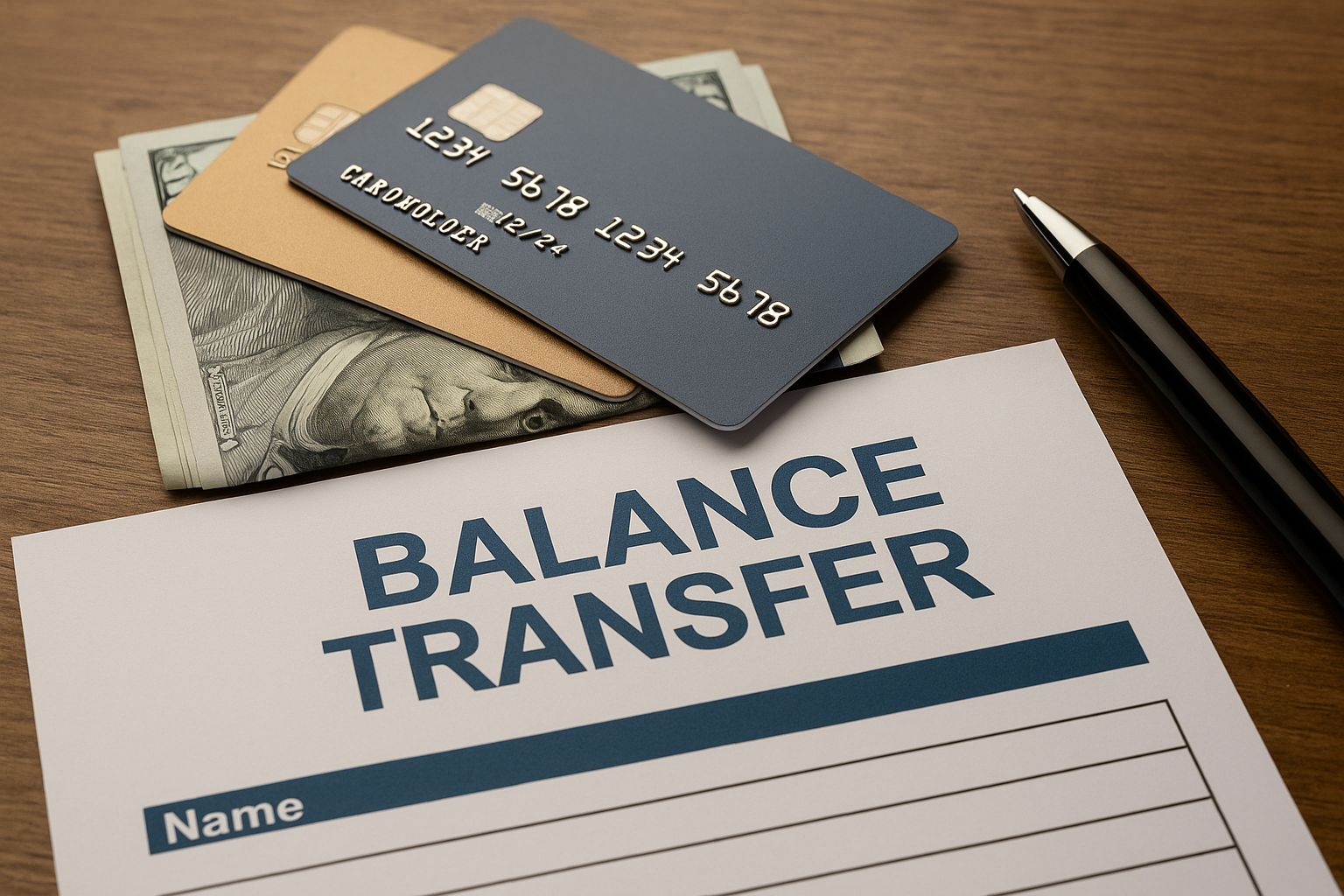Used well, a balance transfer card is a bridge from high interest to breathing room. You move an existing balance to a new card with a temporary 0% intro APR, so more of your payment attacks principal instead of interest. That can speed up payoff, simplify your routine, and give you a clear finish line—if you set one.
How Balance Transfers Work (Quick Primer)
- Open a card that offers 0% intro APR on balance transfers for a set period (often 12–21 months).
- Request the transfer; the new issuer pays your old card and moves that balance to your new account.
- Keep paying the old card’s minimum until it shows $0 (transfers can take days to a couple weeks).
- During the promo window, the transferred amount accrues no interest; when it ends, the regular APR applies to any remaining balance.
Pros
- Save interest, finish faster. With 0% intro APR, every dollar reduces principal. That shortens the timeline if you pay on a schedule.
- Simplify payments. Consolidating multiple balances into one can reduce missed due dates and mental overhead.
- Cash-flow relief. Lower (or zero) interest for a period can smooth your monthly budget while you pay down.
Cons & Fine Print
- Transfer fees. Most cards charge 3%–5% of the amount transferred (≈$30–$50 per $1,000). Always include this in your math.
- Limited transfer amounts. You may not be able to move the full balance; the transfer limit can be below your total credit limit.
- Promo can end early if you’re late. A missed/late payment can void the 0% APR and trigger penalty pricing.
- No grace period on new purchases. If you carry a transferred balance, new purchases on that card often accrue interest immediately. Don’t mix everyday spending with a transfer balance.
- Credit score dynamics. A big transfer on a small limit can spike utilization and nudge your score; it typically improves as you pay down.
0% APR Tips That Actually Work
- Pre-set the “finish-on-time” payment. Add the transfer fee to the amount moved, divide by promo months, and automate that payment right after payday. Example: $3,000 moved + $120 fee = $3,120 ÷ 15 months ≈ $208/month.
- Autopay the minimum, calendar the rest. Set autopay for at least the minimum to protect the promo; then schedule your extra payment as a separate recurring transfer.
- Don’t swipe the transfer card. Use a different card (paid in full monthly) for purchases to preserve a grace period on spending.
- Snowball windfalls. Tax refunds, side income, or “found money” should go 80–100% to the transfer while the APR is 0%.
- Watch the expiration date. Put two reminders on your calendar: 60 days before the promo ends and 14 days before.
Is a Balance Transfer Right for You?
- Yes, usually if your current APR is high, the transfer fee is reasonable, and you can clear the balance within the promo window.
- Maybe not if you’ll keep spending on the transfer card, can’t automate payments, or the fee outweighs expected interest savings.
- Consider alternatives (and compare total cost): a lower-rate consolidation loan with fixed payments, negotiating lower APRs, or an aggressive snowball/avalanche plan without opening new credit.
Common Pitfalls to Avoid
- Only paying the minimum. You’ll still carry a balance when the promo ends—and interest restarts. Automate the “finish-on-time” amount instead.
- Missing a due date. One slip can end your 0% period. Use autopay and a backup calendar alert.
- Ignoring the fee. A 5% fee on $8,000 is $400. Make sure projected interest savings beat that cost.
- Mixing purchases and transfers. Everyday spending on the transfer card can accrue interest immediately and complicate payoff tracking.
- Extending the term quietly. Don’t lower payments once the 0% window starts; keep the calculated amount so you’re debt-free before the promo ends.
Quick DIY Calculator (Copy/Paste)
Monthly target = (Transferred amount + Fee) ÷ Promo months. If that number doesn’t fit your budget, the transfer may not be the right tool—or you may need a longer promo or smaller amount.
Bottom line: Balance transfer cards are excellent tools if you plan the payoff, protect on-time payments, and keep spending separate. Do the fee math, automate a finish-by-promo schedule, and your 0% window can turn balance transfer pros cons into a clear win—with smarter 0% APR tips and fewer transfer mistakes.
